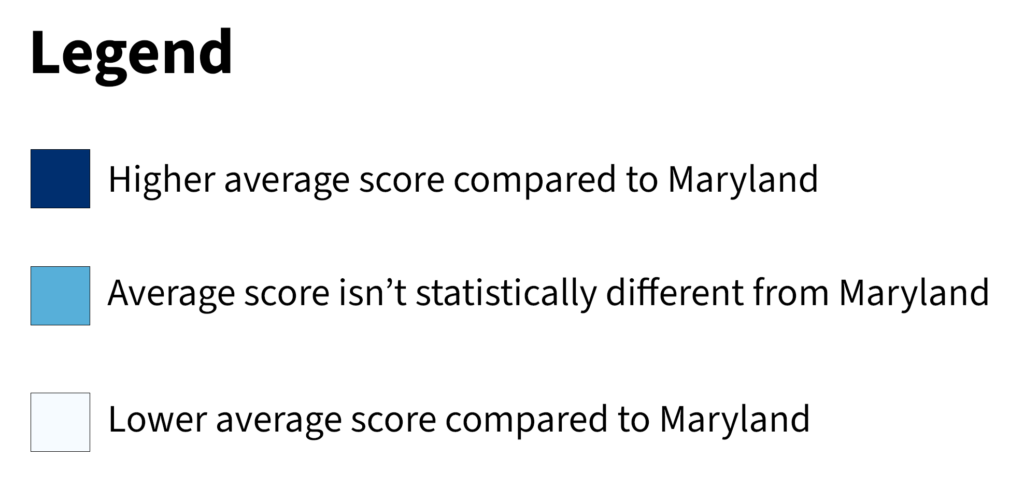Maryland school test scores reflected a national decline in learning, according to newly released data from national tests known as the “nation’s report card.”
The National Assessment of Educational Progress (NAEP) tests are administered yearly to students across the country. The latest test was the first given since 2019 due to the COVID-19 pandemic. Fourth-grade and eighth-grade students across the country took the reading and math exams.
Maryland’s results give insight into the extent of learning loss in the state during the pandemic.
Baltimore City saw decreases in every test, except in eighth-grade reading
Baltimore City participates in the NAEP’s Trial Urban District Assessment (TUDA), which is designed to measure educational outcomes in urban school districts, according to the organization’s website.
The school district experienced a 15-point decrease in average fourth-grade math scores from 2019 (218 to 203), tied with Cleveland for the largest decline among the 26 districts participating in the TUDA. The score to reach the NAEP Basic level— the lowest of the NAEP test— is 214.
Eighth-grade reading test scores were the only exception, holding at 241. Baltimore City was one of the few jurisdictions in the TUDA that didn’t experience a decline in eighth-grade reading scores, along with Clark County in Nevada and Miami-Dade and Duval counties in Florida.
The gap between scores for white and Hispanic students has grown in the past couple of years
The average score for Maryland fourth-grade Hispanic students in reading was 40 points lower than that for white students in 2022. In 1998, this performance gap was 18 points. The average score for Maryland Hispanic eighth-graders in reading was 30 points lower than their white counterparts in 2022, compared to 11 points in 1998.
This trend also persisted in math scores.
This year Hispanic fourth-graders in Maryland had an average math score 37 points lower than white students, compared to 20 points in 2000. Hispanic eighth-graders scored 39 points lower than white students in math, compared to 23 points in 2000.
Rural students outperformed other students based on location
The NAEP assigns districts into one of four location types: city, suburban, rural, and town. On average, rural students outperformed students in the other location types.
For fourth-graders, the average math score for rural students was higher than the lowest average city students by 20 points. In reading, rural students scored higher than city students by 22 points on average. Rural students were also the other location category that saw an increase in reading scores for this demographic.
Rural eighth-graders in the state scored higher on the reading exams than the lowest performing group, suburban students, by 11 points. City and suburban eighth-graders both had the same average math score this year. Rural students scored better than both groups by 14 points.
Maryland scored in the middle of the pack nationally
In 2022, the average score in Maryland (259) was lower than those in 7 jurisdictions, higher than those in 9 jurisdictions and not significantly different from those in 35 jurisdictions.
The state performed the best compared to other states in eighth-grade reading and lagged behind in fourth-grade math. The average fourth-grade math score of 229 was lower than 35 other jurisdictions.


You must be logged in to post a comment.